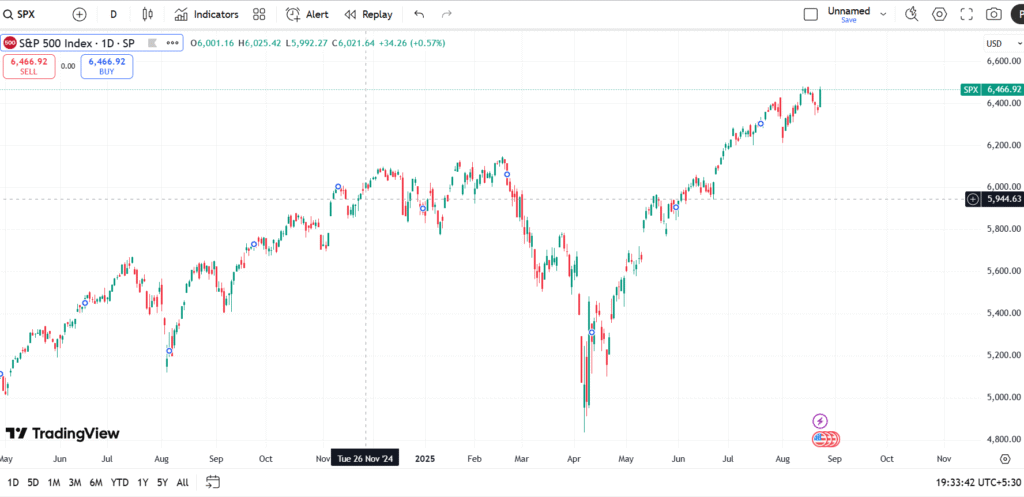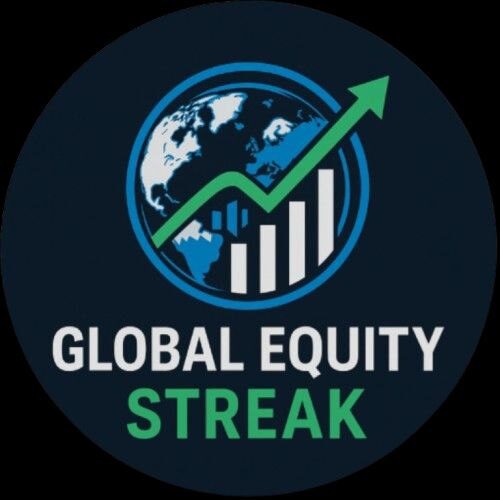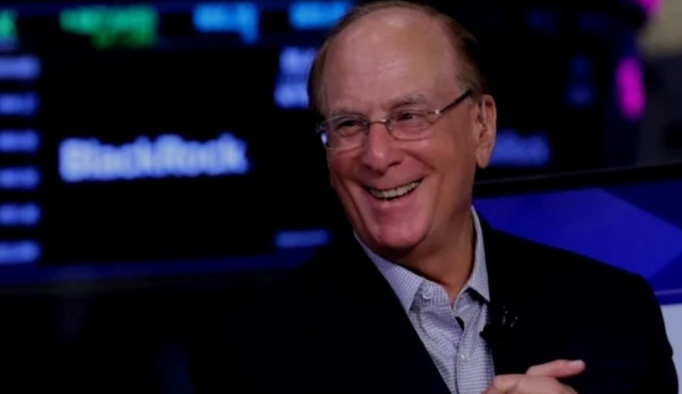In April 2025, BlackRock CEO Larry Fink warned that the S&P 500 could plunge another 20% amid Trump’s tariff shock, calling the U.S. economy already in recession. Instead, the market rebounded strongly, gaining over 16% by August. This article analyzes how the world’s biggest fund manager misread short-term market moves, why his prediction failed, and what lessons investors can learn from the S&P 500’s surprising recovery.
How the World’s Biggest Fund Manager Larry Fink Failed to Predict the S&P 500’s Recovery
When Larry Fink, CEO of BlackRock—the world’s largest asset manager overseeing nearly $10 trillion in assets—speaks, markets usually listen. But in April 2025, his high-profile warning about the U.S. economy and stock market sent shockwaves across Wall Street, only to be disproven within months. His cautionary message at the Economic Club of New York on April 7, 2025, painted a bleak picture: a deepening recession, consumer strain, and the potential for the S&P 500 to plunge another 20%. Yet, instead of collapsing further, the index staged a powerful recovery, leaving investors to wonder—did the world’s biggest fund manager get it wrong?
Larry Fink’s April 2025 Warning
On April 2, 2025, President Donald Trump announced sweeping tariffs, including a 50% levy on Chinese imports, escalating fears of a full-blown trade war. Just five days later, Fink addressed the Economic Club of New York, striking a somber tone.

“Most CEOs I talk to would say we are probably in a recession right now,” Larry Fink declared. He emphasized that tariffs were stoking inflation while simultaneously suppressing consumer spending. He also highlighted how falling stock prices were directly hurting everyday Americans, with 62% of U.S. households invested in equities either through retirement accounts or brokerage holdings.
At that time, the S&P 500 had already slipped nearly 20% from its February peak of around 6,400–6,500, dropping to the 5,200–5,300 range by early April. Fink predicted the pain wasn’t over—arguing that a further 20% decline was possible, which would have pushed the index toward the 4,200–4,300 level.
Yet, while issuing his stark warning, he also tried to inject optimism. Despite the short-term turbulence, Fink called the weakness a “buying opportunity,” insisting there was no systemic risk to the financial system.
The Market’s Response: A Rapid Rebound
Contrary to Larry Fink’s warning, the market did not plunge another 20%. Instead, the S&P 500 bottomed in April at 554.54, a decline of about 13–15% from its February high of 594.18. From there, the index embarked on a steady recovery:
- May 2025: S&P 500 rebounded to 589.39, a 6.3% gain from April’s low. Key drivers included a surprise 90-day pause on reciprocal tariffs, easing investor fears of escalating trade tensions, and optimism around a U.S.-UK trade deal.
- June 2025: The index climbed to 617.85, up 11.4% from April. Strong Q1 corporate earnings—showing 11–13% earnings-per-share growth—fueled confidence.
- July 2025: The rally continued, with the S&P 500 reaching 632.08, a 14% gain from April. Sector rotation saw financials, industrials, and utilities outperform tech, reflecting improving domestic fundamentals.
- August 23, 2025: The S&P 500 closed at 645.31, representing a 16.4% increase from April’s low. While some posts on X (formerly Twitter) exaggerated the recovery as a 23% rebound, actual data confirms the gain stood closer to the mid-teens.
The rally was underpinned by three key factors: cooling inflation (with PCE inflation moderating to 2.1%), expectations of Federal Reserve rate cuts later in the year, and sectoral resilience outside big tech.
Why Fink’s Prediction Fell Flat
Larry Fink’s dire April forecast ultimately failed to materialize, and in hindsight, his timing could not have been worse. His remarks, widely circulated in financial media and amplified on social platforms, gave the impression that a market collapse was imminent. Instead, the opposite happened: investors who bought the April dip were rewarded handsomely within weeks.
1. Tariff Pause Changed the Equation
Larry Fink’s warning came during peak tariff anxiety. Yet, by late April, the U.S. administration surprised markets by announcing a 90-day pause in reciprocal tariffs, dramatically reducing uncertainty. That single policy shift was enough to spark risk-on sentiment and trigger a rebound.
2. Earnings Strength Was Underestimated
Corporate America proved far more resilient than expected. Q1 2025 earnings not only beat Wall Street estimates but also forecast double-digit growth for the year. These strong fundamentals undercut recession fears, making the April sell-off look overdone.
3. The Market Moves Faster Than Narratives
By the time Larry Fink issued his warning, markets had already priced in tariff fears. His call for another 20% decline assumed prolonged economic stress, but equity markets tend to anticipate future conditions, not present fears. The rebound highlighted how quickly sentiment can turn when policy risks ease.
Sentiment and the “Rekt” Narrative
On social media, particularly on X, many traders mocked Fink’s failed prediction. The term “rekt”—slang for being disastrously wrong in trading—was frequently applied to institutional warnings like his, especially as the S&P surged higher. While some posts exaggerated the scale of the rebound, the underlying frustration was clear: retail investors felt Wall Street leaders were too cautious, missing out on a profitable rally.
Long-Term View: Was Fink Really Wrong?
While his short-term forecast was off, it’s worth noting that Fink’s broader message contained balance. He emphasized that the downturn could be a “buying opportunity” and reiterated his optimism about long-term themes like artificial intelligence infrastructure and private markets. In that sense, his long-term bullishness was validated.
Still, his credibility took a hit in April. As the leader of the world’s biggest fund manager, his warnings carry disproportionate weight. When they miss the mark, the disconnect between Wall Street caution and Main Street optimism becomes glaring.
Conclusion: Lessons From Fink’s Missed Call
Larry Fink’s April 2025 warning on the S&P 500 is a textbook example of how even the most influential voices in finance can misread short-term market dynamics. His recession fears were not baseless—tariff-driven inflation and consumer weakness were real risks. But markets are forward-looking machines, and the quick tariff pause, coupled with strong earnings and easing inflation, proved too powerful for bears to control.
For investors, the episode reinforces two key lessons:
- Even the biggest fund managers can be wrong about timing. Predictions should be taken as perspectives, not certainties.
- Policy shifts and fundamentals matter more than narratives. The April rebound showed how quickly markets can recover when the underlying economic picture improves.
In the end, Fink’s “buying opportunity” remark was the part that aged best. Those who tuned out the fear and bought the dip reaped the rewards—proving once again that markets often move to embarrass even the most seasoned experts.larry Fink larry Finkl

